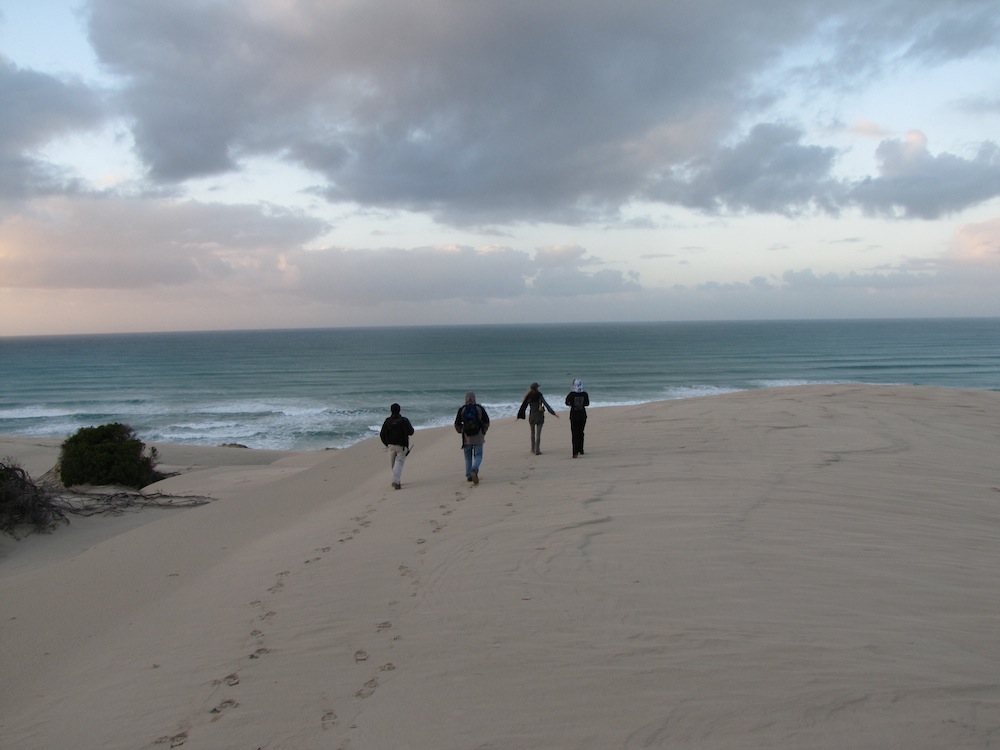 Sea barnacles have an astonishing sex life.
Sea barnacles have an astonishing sex life.
I’ll spare you the intimate details, but under that hard impassive shell lurks a tiny throbbing beast. I know this thanks to Dalfrenzo Laing, an excellent guide who makes marine life even more colourful than it already is.
Dalfrenzo is impressive with his star gazing too, trotting out the scientific names for each fanciful constellation. Then he makes the fynbos and proteas positively bloom with the fascinating facts he tells about them. All done with the glint of several gold teeth, a couple of scars, a cheeky grin and an entertaining accent.
Dalfrenzo is the head guide at De Hoop Nature Reserve on the whale route on South Africa southern coast, and he’s so knowledgeable that you imagine he must have a solid academic career behind him. “Naah,” he says. “I used to be a petrol pump attendant.”
His first 20 years didn’t auger well for a successful lifestyle, with a background of poverty, drugs and gangs. But he’s more than made up for it since, and he's now one of South Africa’s best Marine Guides, a breed even scarcer than the whales he’s pointing out. He’s also a Level 1 Nature Guide, earning both qualifications from The Field Guides Association of Southern Africa (FGASA).
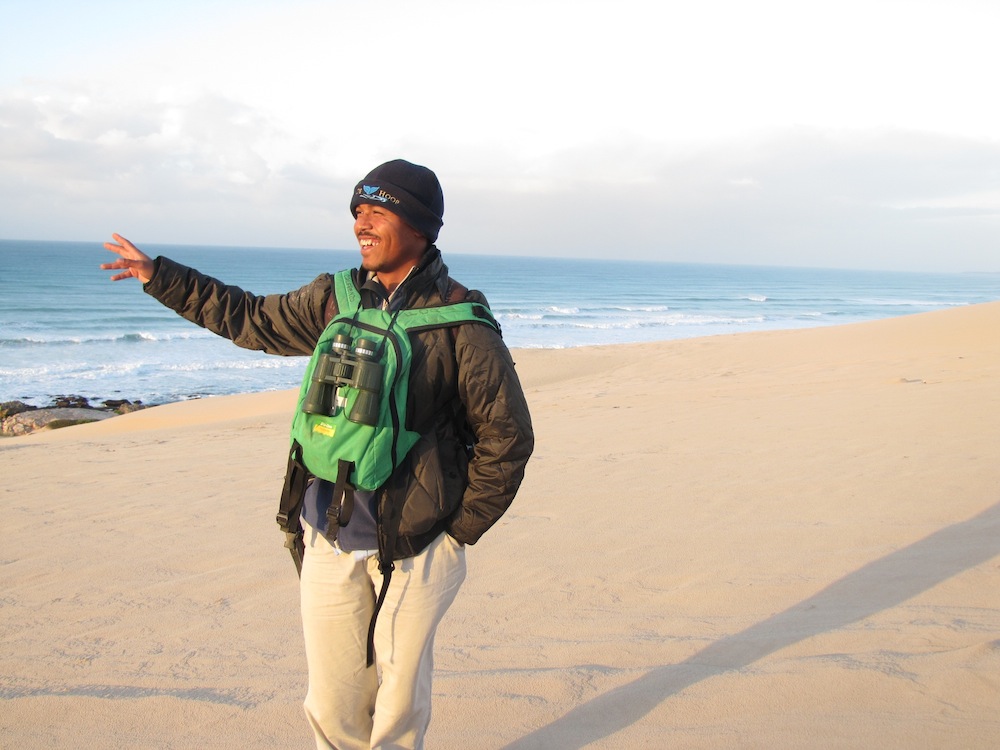 Every year, about 40% of the world’s remaining Southern Right Whales breed in the clear waters around De Hoop. As a marine reserve and World Heritage Site it guarantees these endangered mammals safety, and they come so close to the shore that you can watch them from the sand dunes. As well as offering guided marine or inland walks the reserve has introduced a Vulture Experience, where a guide takes you hiking up the Potberg Mountain to see a colony of endangered Cape Vultures.
Every year, about 40% of the world’s remaining Southern Right Whales breed in the clear waters around De Hoop. As a marine reserve and World Heritage Site it guarantees these endangered mammals safety, and they come so close to the shore that you can watch them from the sand dunes. As well as offering guided marine or inland walks the reserve has introduced a Vulture Experience, where a guide takes you hiking up the Potberg Mountain to see a colony of endangered Cape Vultures.
De Hoop sprawls across perfect hiking and mountain biking territory, and you can also book day trips to go birding at nearby Stanford, visit some neighbouring wine farms or see the Shipwreck Museum in Bredasdorp.
There's a variety of accommodation, from camping to self-catering cottages or comfortable suites, and the reserve is open for day visitors too. Its Fig Tree Restaurant serves breakfast, lunch, dinner and snacks all day, while the wine cellar stocks more than 3,000 wines. It's wonderful to sit by the fire in the cozy lounge nursing a glass of wine or a hot chocolate after a long, bracing hike throught the fynbos.
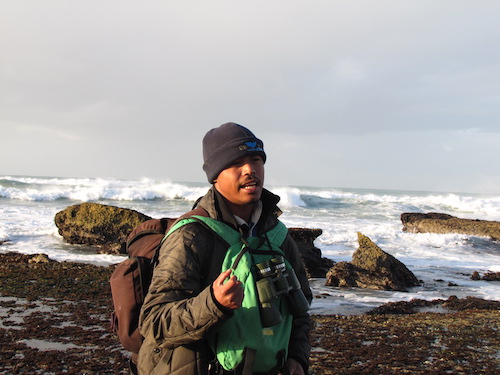 Dalfrenzo himself was born in Robertson but grew up in the quiet town of Napier, and still plays rugby for the local team. He matriculated from Napier High School in 2008 in second place overall, beaten only by his friend Clayton. Jobs were limited so he became a petrol pump attendant, until the recession tightened and he was retrenched nine months later.
Dalfrenzo himself was born in Robertson but grew up in the quiet town of Napier, and still plays rugby for the local team. He matriculated from Napier High School in 2008 in second place overall, beaten only by his friend Clayton. Jobs were limited so he became a petrol pump attendant, until the recession tightened and he was retrenched nine months later.
“The manager brought me into the office and said you're young and don’t really have any responsibilities so I have to let you go,” he remembers. “I hadn’t walked more than 100 meters when a woman approached me. She worked at Napier Tourism Office and she asked me if I wanted to join a guiding course. I didn’t know what that was because I’d never been to a nature reserve in my life.”
Dalfrenzo isn’t sure whether the tourism officer bumped into him by accident or by design. Her office was next to the petrol forecourt, and she probably knew jobs were being cut. Perhaps she also knew he had studied tourism at school. “It was lucky she bumped into me that day. It was a perfect opportunity so I said I’d love to attend,” he says.
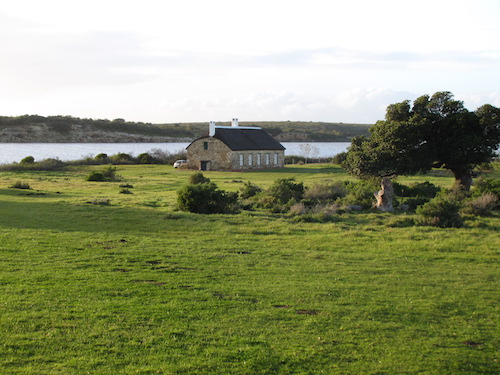 He found he'd been recruited for the first Marine Guiding Course to be offered in the country, but first he had to convince the course trainer that he was a good candidate. “I had to explain to him why I wanted to do the course. The only thing I could say is I want to improve my lifestyle and get out of the poverty I’m in, so this is an opportunity I can make the best of. He said fine, he’ll accept me, and did I know anybody else who could attend. So I called my friend Clayton.” The pair of them took an eight-month course at De Hoop with recruits from vastly different walks of life. “There were about 16 on the course with ex-lawyers, ex-real estate agents, a priest and me, an ex-petrol pump attendant.”
He found he'd been recruited for the first Marine Guiding Course to be offered in the country, but first he had to convince the course trainer that he was a good candidate. “I had to explain to him why I wanted to do the course. The only thing I could say is I want to improve my lifestyle and get out of the poverty I’m in, so this is an opportunity I can make the best of. He said fine, he’ll accept me, and did I know anybody else who could attend. So I called my friend Clayton.” The pair of them took an eight-month course at De Hoop with recruits from vastly different walks of life. “There were about 16 on the course with ex-lawyers, ex-real estate agents, a priest and me, an ex-petrol pump attendant.”
Dalfrenzo’s participation was funded by Aghulas Bio Initiative (ABI), which sponsors people from local communities to improve themselves and strengthen conservation. His training included practical experience at various nature reserves and working in restaurants to learn hospitality skills.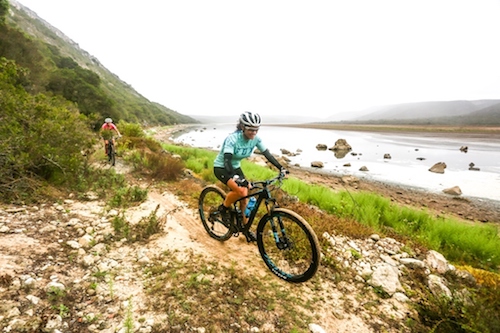
After eight months he gave a final presentation to the course directors and William Stephens, the owner of the De Hoop Collection that runs the accommodation on the reserve. Dalfrenzo said he believed De Hoop could be improved if it had some trained guides on the staff, and he promptly found himself employed. He's now the head guide with a team of four.
He also gives talks to groups including schoolchildren, encouraging them to protect and enjoy wildlife and perhaps consider it as a career.
His own school days were troubled before he found his direction. “I struggled with diseases when I was much younger,” he says. “I had an accident and fell on my head when I was six and I struggled with epilepsy until I was 13, so I always think I could have been more clever than I am now.”
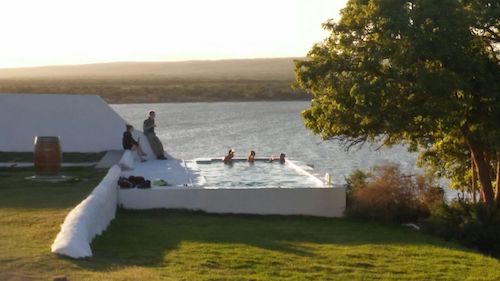 He outgrew epilepsy at about the same time his father left the family. “At that point I just had to be the man of the house,” he says. His mother moved them back to Robertson, where Laing got involved with drugs and gangs. “For three years I was involved in heavy stuff. Then I made a mess of one year of my school career and got slapped by my mother. We came back to Napier to get me away from the gangs and the drugs, and from that time I was mostly on the straight and narrow.” Now he’s a dreamer who always has new ideas about what he wants to achieve. De Hoop is giving him plenty of opportunity to do that.
He outgrew epilepsy at about the same time his father left the family. “At that point I just had to be the man of the house,” he says. His mother moved them back to Robertson, where Laing got involved with drugs and gangs. “For three years I was involved in heavy stuff. Then I made a mess of one year of my school career and got slapped by my mother. We came back to Napier to get me away from the gangs and the drugs, and from that time I was mostly on the straight and narrow.” Now he’s a dreamer who always has new ideas about what he wants to achieve. De Hoop is giving him plenty of opportunity to do that.
He told me he was planning to bring his mother to the reserve one day to show her where he works, so she can be proud of what he’s achieved. But he’ll probably get a slap if he tells her about the sex life of the barnacle.
For more details about De Hoop, click here: